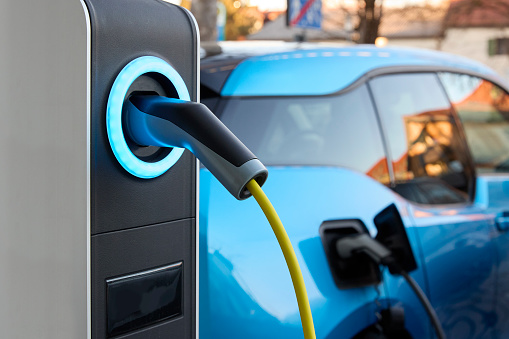The rise of electric vehicles (EVs) is one of the most significant changes in the automotive and energy industries. With a growing emphasis on sustainability, reducing carbon emissions, and combating climate change, EVs are quickly becoming an essential part of the transportation ecosystem. However, as the adoption of electric vehicles increases, so does the need for robust charging infrastructure that supports them.
In this blog post, we will explore the future of electric vehicles and the charging infrastructure required to support them. We will cover the current state of EVs, the advancements in charging technology, practical tips for businesses and consumers, and potential challenges and solutions that will shape the future of the EV landscape. Whether you’re a business leader looking to integrate EVs into your operations or a consumer eager to understand the evolving charging ecosystem, this post will provide you with the insights you need to stay ahead of the curve.
The Growing Popularity of Electric Vehicles
Electric vehicles have come a long way since their inception. As of 2024, the global electric vehicle market is growing at an unprecedented rate. According to the International Energy Agency (IEA), the number of EVs on the road globally is expected to exceed 300 million by 2040, a significant jump from just 10 million in 2020.
This surge in adoption is fueled by several factors:
- Environmental Concerns: As global awareness of climate change grows, governments and consumers are shifting away from fossil fuel-based transportation in favor of cleaner, more sustainable options.
- Government Incentives: Many governments offer incentives such as tax credits, rebates, and reduced registration fees to encourage the adoption of EVs. This makes electric cars more affordable for the average consumer.
- Improved Technology: Advances in battery technology have increased the range of electric vehicles and reduced charging times, making them more practical for everyday use.
- Lower Operating Costs: EVs have fewer moving parts than traditional internal combustion engine (ICE) vehicles, meaning they require less maintenance and are cheaper to operate.
As EV adoption increases, it’s essential to understand that the growth of electric vehicles is tightly intertwined with the development of an equally robust charging infrastructure. Let’s take a closer look at the evolving landscape of EV charging and the technologies driving this transformation.
The Need for Advanced EV Charging Infrastructure
One of the main barriers to widespread EV adoption is the availability of charging stations. In the past, consumers and businesses were reluctant to adopt EVs due to “range anxiety,” or the fear of running out of power before reaching the next charging station. While advances in battery range have alleviated some of these concerns, the infrastructure required to support the growing number of EVs is still playing catch-up.
There are two major categories of EV charging infrastructure: public charging networks and home charging solutions.
Public Charging Networks: Expanding Access
Public charging stations are crucial for those who do not have access to home charging solutions or who travel long distances. Currently, most public charging stations are concentrated in urban areas, but as the demand for EVs grows, the charging infrastructure must expand to more rural areas and along highways to ensure that EV drivers have access to reliable charging options.
Charging stations come in three main types:
- Level 1 Charging: This is the slowest form of charging, typically using a standard 120V outlet. Level 1 chargers are ideal for home use but not suitable for public charging due to their slow speed.
- Level 2 Charging: This is the most common type of public charger, operating at 240V and offering faster charging than Level 1. Level 2 chargers are often found in parking lots, shopping centers, and other public places.
- DC Fast Charging (Level 3): These stations provide high-speed charging, capable of charging an EV up to 80% in as little as 30 minutes. Fast charging stations are often located along highways, making long-distance EV travel more feasible.
For public charging networks to meet the demand of growing EV adoption, governments, businesses, and private investors will need to work together to expand the number of charging stations. The future will see an increase in the number of high-speed charging stations, better integration with renewable energy sources, and the adoption of universal standards for charging infrastructure.
Home Charging: Empowering Consumers
Home charging is the most convenient option for EV owners, as it allows them to charge their vehicles overnight. Many homeowners with garages or dedicated parking spaces can install Level 2 chargers at their residence. As the cost of home charging equipment continues to fall, more homeowners are likely to make the switch to electric vehicles.
For businesses, offering charging stations at workplace locations is also becoming increasingly important. It not only supports employee EV owners but can also be a selling point for potential recruits who value sustainability. Businesses that operate fleets of vehicles can also benefit from installing charging stations on-site, saving on fuel costs and reducing their carbon footprint.
Key Technologies Shaping the Future of EV Charging
The future of electric vehicle charging infrastructure goes beyond just the expansion of stations. Several key technologies are poised to transform the EV charging landscape:
1. Wireless Charging
Wireless or inductive charging is an emerging technology that could significantly reduce the hassle of plugging in an EV. Using electromagnetic fields, wireless charging enables EVs to charge by simply parking over a charging pad. This technology is still in its early stages, but it’s expected to be a game-changer in making charging more convenient for consumers.
2. Vehicle-to-Grid (V2G) Technology
V2G technology allows EVs to not only draw power from the grid but also supply power back to it. This bidirectional energy flow could help stabilize the grid during peak demand periods. For instance, if there is an overproduction of renewable energy during the day, EVs could store this energy and release it back into the grid when demand is higher. This technology is a promising solution for grid management and energy storage.
3. AI-Powered Charging Networks
Artificial Intelligence (AI) can play a pivotal role in optimizing the operation of charging networks. By analyzing data on traffic patterns, weather conditions, and user behavior, AI can predict the demand for charging stations and dynamically adjust pricing and availability. This can help reduce wait times at charging stations and ensure that infrastructure is used efficiently.
For example, a Web development agency build web platforms that connect users with nearby charging stations, utilizing AI to suggest optimal routes based on charging availability.
4. Integration with Smart Grids
The integration of EV charging infrastructure with smart grids will allow for better energy distribution and management. Smart grids use digital technology to optimize the flow of electricity and can respond dynamically to changes in energy demand. As more EVs are adopted, smart grids will play a critical role in managing electricity usage and preventing overloads.
Overcoming Challenges in EV Charging Infrastructure
While the future of EVs and charging infrastructure is promising, there are several challenges that must be addressed:
1. Charging Station Availability
There are still significant gaps in charging infrastructure, particularly in rural areas and along long-distance routes. Governments and businesses will need to prioritize building charging networks in underserved areas and integrate charging stations into public transportation hubs, shopping malls, and highway rest stops.
2. Standardization of Charging Ports
Currently, there is no universal standard for EV charging ports, which can cause confusion and inconvenience for users. Efforts to standardize connectors and charging protocols across different manufacturers will help streamline the charging process and encourage more widespread adoption of EVs.
3. Grid Capacity and Energy Demand
As the number of electric vehicles on the road grows, the demand for electricity will increase. This could strain the power grid, particularly during peak charging hours. To address this, the energy sector will need to invest in upgrading grid infrastructure, integrating renewable energy sources, and implementing demand-response strategies.
Conclusion
The future of electric vehicles and charging infrastructure is incredibly promising. As technology advances, we can expect to see faster, more convenient charging options, increased integration with smart grids, and innovative solutions such as wireless charging and vehicle-to-grid technology. However, significant investment and collaboration between governments, businesses, and energy providers will be necessary to address the challenges of expanding and optimizing charging networks.
For businesses like CentricDXB, which is positioned at the forefront of sustainability and technological innovation, there is a clear opportunity to play a key role in the development of smart charging infrastructure. Whether it’s through supporting the integration of renewable energy sources, developing AI-powered charging solutions, or contributing to the expansion of charging networks, the potential to lead the charge in the future of EV infrastructure is vast.
As electric vehicles become a more common sight on the roads, businesses and consumers alike must prepare for the ongoing evolution of EV technology and charging infrastructure. By staying informed and adopting cutting-edge solutions, we can ensure that the transition to a cleaner, more sustainable transportation future is a smooth and efficient one.








Leave a Reply